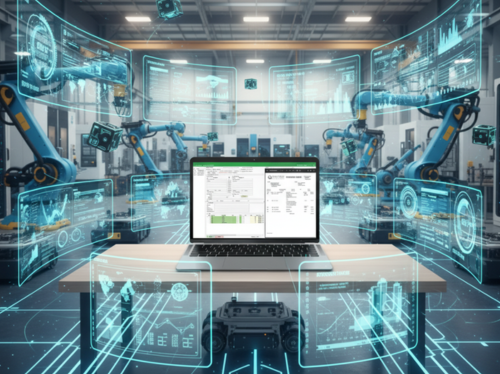Let’s Talk Green Machining : Mazak drives green machining era

Steed Webzell chats with Greg Cocks, senior manager – European sales engineering at Mazak Europe, about the company’s new-generation, ultra-green VARIAXIS i-800 NEO
Among the machine tools catching admiring glances at the MACH 2022 exhibition in April was Mazak’s latest-generation VARIAXIS i-800 NEO vertical machining centre. Why? Well, this new model delivers a carbon footprint considerably lower than the predecessor model over the course of its operational life. This notable achievement is a reflection of Mazak’s increased commitment towards environment-friendly manufacturing and forms part of the company’s Go Green Strategy.
“Mazak has an environment and sustainability goal to achieve by 2030,” explains Greg Cocks, senior manager – European sales engineering at Mazak Europe. “We’re planning to build machines that are four times more efficient than they were in 2010.”
Mazak applies a number of factors in determining a measurement of sustainability, everything from the power requirement, to the number of service intervals and the overall size of the machine in relation to its machining envelope. The company builds several criteria into what its calls ‘Factor X’. Mazak’s Factor X target is four.
“In essence, we apply the equation to a machine tool that was built in 2010, and to each new model iteration thereafter and look for the factor of change,” says Mr Cocks. “We’re proud to tell our customers that we now have a calculation which we apply to our latest machines in pursuit of continuous improvement. You can see it with our new VARIAXIS i-800 NEO, which has a 22.7% lower carbon footprint when running in comparison with the previous-generation model.”
“Although there’s a clear market demand for reduced energy consumption due to its rising price, customers are also starting to ask questions about carbon footprint in relation to a machine’s lifecycle,” states Mr Cocks.
This information is critical in an increasing number of industries. Automotive manufacturers, for example, are reporting the CO2 content of the vehicles they build.
“The only way they can do this accurately is to know the CO2 content of the components that go into that vehicle,” says Mr Cocks. “There is subsequently a requirement on supply-chain manufacturers to give relatively accurate calculations on how much CO2 their machine tools use to make the components. By using a Mazak machine to manufacture parts, you may well consume less CO2 than previously, placing you in an advantageous position when tendering for work.”
Mazak is clearly very keen on measuring and analysing carbon footprint. The company offers products such as its Energy Dashboard, which measures in real time the actual energy consumption per part using standards set out by the Greenhouse Gas Protocol.
“For example, the dashboard will reveal that you’ve used 6.4 kW of energy to manufacture the part and that it cost X pounds,” says Mr Cocks. “By providing our customers with easy access to this information they will start to have a better understanding of costs and carbon footprint per component.”
Mazak’s VARIAXIS i-800 NEO delivers high-accuracy machining over extended periods and is equipped with a wide machining area for handling large workpieces or jigs, along with a variety of spindles to meet every industrial requirement. However, it is far from the only machine in Mazak’s portfolio boasting green credentials.
Says Mr Cocks: “All of the Mazak machines we now design here at our European Manufacturing Plant in Worcester do not use transformers. They run natively on 400V, which negates the energy losses associated with transforming power.”
Ultimately, it is clear to see that the Mazak Go Green Strategy runs throughout the company.
“Quite simply, it’s the right thing to do,” concludes Mr Cocks.








